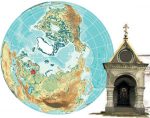
Ладога – крупнейшее озеро в Европе
На севере европейской части России находится самое большое в Европе озеро – Ладожское. В северной части его берега скалистые, здесь озеро самое глубокое, а в южной – оно мелкое и берега его низменные. В Ладожское озеро впадает много рек, в их числе Свирь, вытекающая из Онежского озера, и Волхов, вытекающий из озера Ильмень. Из Ладожского острове […]

Прикаспийская низменность — самая низкая точка России
Известно, что средняя высота поверхности нашей страны составляет 430 м, а амплитуда высот рельефа достигает почти 6 км! Наивысшая точка страны – г. Эльбрус, на Кавказе, имеет высоту 5642 м, а наименьшая отметка высот – минус 27 м, т. е. на 27 м ниже уровня Мирового океана, расположена на Прикаспийской низменности. Вместе с Каспийским, Азовским […]

Черноземы — самые плодородные почвы России
Наверное, трудно найти в России другой такой природный ландшафт, измененный человеком до неузнаваемости. Это и понятно, ведь черноземная степь – кормилица страны. Черноземы распространены в лесостепных и степных районах страны. Черноземные почвы – самые плодородные. Гумусовый горизонт достигает 1 м и более. Содержание перегноя в нем составляет 6–15%. Цвет почв меняется от темно-серого до черного. […]

Самые крупные реки России
Реки нашей страны относятся к бассейнам Северного Ледовитого, Тихого, Атлантического океанов и Каспийского моря. Главнейшие реки бассейна Северного Ледовитого океана – Обь, Енисей, Лена – отличаются длиной и многоводностью. Это объясняется обширностью территории, по которой они протекают, и обильным смешанным питанием. Крупнейшая река Западной Сибири – Обь (3650 км) – образуется слиянием Катуни и Бии. […]

Ключевская Сопка — самый высокий действующий вулкан России
Самый высокий действующий вулкан – Ключевская Сопка на Камчатке. Его высота – 4750 м. Эта территория расположена на стыке Тихоокеанской и Евразиатской литосферных плит. Горы и глубоководные котловины тихоокеанского пояса, представляющие собой переходную зону между материком и океаном, отличаются резкой вертикальной расчлененностью рельефа, активной вулканической деятельностью и высокой сейсмичностью. Горо-образовательные процессы продолжаются и в настоящее […]

Наивысшая точка России – гора Эльбрус
Наивысшая точка России – г. Эльбрус на Кавказе с абсолютной высотой 5642 м. Горная система Большого Кавказа входит во внутриконтинентальный Альпийско-Гималайский тектонический пояс. Она образовалась в эпоху кайнозойской складчатости. Поднятие Кавказских гор сопровождалось внедрениями магмы в тектонические структуры. Складчатый фундамент краевой части Большого Кавказа сформирован розовыми гранитами, в которых реки прорезали живописные ущелья. Осадочный чехол сложен […]
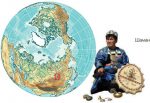
Байкал – самое глубокое озеро в мире
«Славное море, священный Байкал…», – так и хочется запеть неспешно эту старинную песню, глядя на волны удивительного озера. Древний как мир, Байкал существует около 25–30 миллионов лет. Интересные предположения существуют относительно происхождения слова «Байкал». По одной версии, «Байкал» – это тюркоязычное слово, происходящее от «Бай-Куль», что значит «богатое озеро». По другой, это слово происходит от […]

Полюс холода Северного полушария
Полюс холода Северного полушария – Оймякон и Верхоянск, абсолютный минимум температуры здесь –71 °C. Большая часть территории России расположена в умеренном климатическом поясе, в пределах которого различают несколько типов климата. Для европейской части страны характерен умеренно континентальный климат с умеренно холодной зимой (средняя температура января меняется от –8 °C на западе до –16 °C в Предуралье) […]

Самая многолетняя мерзлота
Почти 2/3 территории России охвачено многолетней (вечной) мерзлотой. Она распространена на севере европейской части России и Западной Сибири, а за Енисеем – почти до южных границ нашей страны. Многолетняя мерзлота, «вечная мерзлота» – верхняя часть земной коры, температура которой долгое время (от 2–3 лет до тысячелетий) не поднимается выше 0 °C. В зоне вечной мерзлоты […]

Каспийское море – самое большое по площади озеро в мире
Каспийское море омывает территорию нашей страны на юге и занимает 1-е место в мире по площади среди озер. Как это может быть, море и вдруг озеро? Каспийское море-озеро (максимальная глубина 1025 м) – крупнейший в мире (площадь 376 тыс. км2) замкнутый водоем. По одной из гипотез, оно представляет собой часть древнего моря и поэтому относится […]

Уральские горы – самые длинные в России
Географическое положение Урала уникально. Он расположен на границе двух частей света – Европы и Азии. На Урале повсеместно можно встретить символические знаки-обелиски «Европа – Азия». Уральские горы – самые длинные горы в России. Их протяженность составляет 2100 км, что ставит их на 10-е место в мире после Гималаев (2400 км)! Уральская горная страна представляет собой […]
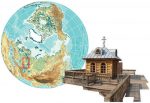
Волга – самая длинная река в Европе
Волга – крупнейшая река Русской равнины и Европы в целом – берет начало на Валдайской возвышенности. Длина Волги – 3531 км. Годовой сток – 243 км3, площадь водосборного бассейна – 1360 тыс. км2. Пройдя Верхневолжские озера, она из небольшого ручейка превращается в полноводный широкий поток. В среднем течении после впадения главных притоков – Оки (длина 1500 […]
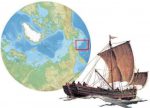
Самое большое море России
Самое большое море, омывающее берега России – Берингово, – самое северное среди морей Тихого океана. Берингово море (максимальная глубина 5500 м) – самое северное среди дальневосточных и крупнейшее по площади (2315 тыс. км2) из омывающих Россию. На севере через Берингов пролив оно соединяется с Чукотским морем, на юге дуга Алеутских и Командорских островов отделяет его […]
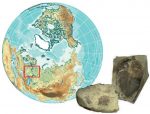
Самая большая равнина Европы
Она так и называется – Восточно-Европейская или Русская равнина. Это одна из наиболее крупных равнин на Земле. На севере ее омывают моря Северного Ледовитого океана, на востоке она ограничена Уралом, на западе простирается до Балтийского моря, на юге – до низовьев Дона, Волги и берегов Каспийского моря. Кроме того что она одна из самых больших […]
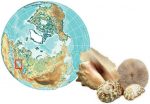
У курортов есть проблемы
Черное и Азовское моря славятся прежде всего своими курортами (от нем. Kur – лечение и Ort – место). Санаторно-курортный комплекс г. Сочи – крупнейший в России. В городе сосредоточено более 50% курортного потенциала всего Краснодарского края. На Черноморском побережье расположились десятки санаториев, пансионатов и домов отдыха. Не выезжая за пределы курорта, можно побывать практически во […]
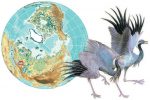
Азовское море — самое маленькое и мелкое море России
Азовское море (максимальная глубина 15 м) – наиболее мелководное и одно из самых маленьких по площади (39 тыс. км2) морей на Земле. Керченским проливом оно соединяется с Черным морем и представляет собой, по сути, его залив. Среди впадающих в море рек отметим Дон и Кубань. Берега главным образом низинные. Для северных берегов характерны длинные, далеко […]
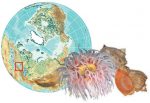
Черное море. География России.
Черное море (максимальная глубина 2210 м) и Азовское море расположены на юге Русской равнины и разделяют Восточную Европу и Малую Азию. Через проливы Босфор и Дарданеллы эти моря соединяются с Мраморным и Средиземным морями и Атлантическим океаном. Береговая линия Черного моря, за исключением его северной части, изрезана слабо и характеризуется простыми очертаниями. Западные и северо-западные […]

Международное сотрудничество на Балтике
Балтийское море всегда имело важное транспортное значение. Новые геополитические условия, в которых оказалась наша страна с начала 1990-х гг., потребовали строительства новых и коренной модернизации существующих портовых комплексов в Санкт-Петербурге, Калининграде, Усть-Луге, бухте Батарейная, Приморске. Балтийские порты играют начительную роль в морских торговых связях России со странами Западной Европы, Северной и Южной Америки, Африки. Каждый […]

На уровне Балтийского моря
Балтийское море (максимальная глубина 470 м) расположено на северо-западе Русской равнины, соединяется с Северным морем и Атлантическим океаном проливами Скагеррак, Каттегат, Зунд, Большой и Малый Бельт. Береговая линия сильно изрезана. Северные и западные берега в основном возвышенные, скалистые, изобилуют многочисленными фьордами и шхерами. Восточные и южные – преимущественно выровненные, отличаются песчаными косами, дюнами, отмелями. Балтийское […]

«Красный прилив» на Камчатке
Человек не всегда разумно использовал и использует морские биоресурсы. Интенсивный рыбный промысел и добыча морепродуктов наносят непоправимый ущерб морским биоресурсам, которые не успевают восстанавливаться и ощутимо снижаются. Кроме того, рыболовецкие суда, рыбозаводы, береговые поселки, портово-промышленные сооружения превратили прибрежные акватории в приемник сточных вод. Загрязнение прежде всего заливов, бухт и приустьевых участков рек увеличивается. Этому способствует […]

Главный рыбный «цех» страны
Моря Тихого океана – главный рыбопромысловый район России. «А в море бывают киты великие, нерпа, каланы: и те же каланы выходят на берег по большой воде…» – так писал о богатствах дальневосточных морей выдающийся русский землепроходец Владимир Васильевич Атласов (ок. 1661–1711). Лососевые, минтай, тихоокеанская сельдь, тихоокеанская треска, камбала, палтус, сайра, корюшка, терпуг, кальмар, камчатский краб, […]

Залив Петра Великого
Вплоть до XVIII в. многое было неизвестно на Дальнем Востоке: есть ли земли и острова в Тихом океане, далеко ли до берегов Америки. Петр Первый, заботясь о дальневосточных окраинах своего государства, направил в 1719 г. на Камчатку двух геодезистов (топографов) – Ивана Евреинова и Федора Лужина. Досрочно выпущенные из Морской академии, они прибыли в Охотск […]
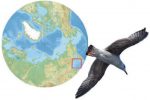
Охотское море
Охотское море (максимальная глубина 3521 м) соединяется с Японским проливами Невельского и Лаперуза, а через многочисленные Курильские проливы, наиболее крупные из которых Буссоль, Крузенштерна и Фриза, – с Тихим океаном. На востоке море омывает побережье Камчатки, на юге и юго-западе оно ограничено островами Курильскими, Хоккайдо (Япония) и Сахалин, на севере и западе – побережьем материка. […]

У дальневосточных рубежей
Моря Дальнего Востока – Берингово, Охотское и Японское – вытянулись вдоль восточной окраины Евразии с севера на юг более чем на 3000 км и в значительной степени сходны между собой по происхождению и климатическим условиям. Климат носит ярко выраженный муссонный характер и зимой находится под влиянием Сибирского антициклона. По типу моря относятся к окраинным материковым […]
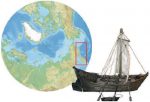
Из Ледовитого в Тихий
Восточная граница России проходит по водным просторам Тихого океана и его морей – Японского, Охотского и Берингова. Здесь Россия граничит с Японией и США. Граница проходит по более или менее широким морским проливам: с Японией – по проливам Лаперуза, Кунаширскому, Измены и Советскому, отделяющим российские острова Сахалин, Кунашир и Танфильева (Малая Курильская гряда) от японского острова […]

Если растают полярные льды…
Северные моря подвергаются все более сильному влиянию хозяйственной деятельности человека. Это ведет к росту концентрации загрязняющих веществ, особенно в прибрежных районах, заливах, бухтах, приустьевых зонах. Отмечается загрязнение донных отложений, прежде всего тяжелыми металлами, нефтепродуктами, фенолами. В последние годы зафиксировано обеднение морской флоры и фауны и уменьшение размеров отдельных обитающих в воде организмов. Большую потенциальную опасность […]
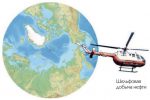
Современные исследования Арктики
Развитие районов Крайнего Севера и Дальнего Востока потребовало планомерного и систематического изучения Арктического бассейна. И такие исследования уже в советское время начались: в Арктике (от греч. arktikos – северный) были построены обсерватории и развернута сеть метеостанций, приступили к освоению Северного морского пути – кратчайшего морского пути из Европы в Восточную Азию, проводились гидрографические экспедиции и […]

У берегов Чукотки
Чукотское море (максимальная глубина 1256 м) – самое восточное из российских арктических морей, омывает северные берега Чукотского полуострова и северо-западное побережье Аляски, граничит на западе с Восточно-Сибирским морем, на востоке – с морем Бофорта, на юге Берингов пролив соединяет его с Беринговым морем. Береговая линия изрезана незначительно. Берега в основном гористые, во многих местах образуют […]
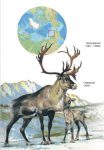
Там, где была Земля Санникова…
Восточно-Сибирское море (максимальная глубина 915 м) расположено между Новосибирскими островами – на западе и островом Врангеля – на востоке. Проливом Лонга и севернее острова Врангеля оно соединяется с Чукотским морем. Береговая линия изрезана слабо. Наиболее крупные заливы – Колымский, Чаунская губа. Западные и юго-западные берега преимущественно низменные, восточные и юго-восточные, как правило, гористые и обрывистые. […]

Почему море названо именем Лаптевых?
Море Лаптевых названо в честь мореплавателей – двоюродных братьев Харитона и Дмитрия Лаптевых, отважных участников Великой Северной экспедиции, исследователей Арктики. Море Лаптевых (максимальная глубина 3534 м) ограничено на западе полуостровом Таймыр и островами Северная Земля, на востоке – Новосибирскими островами. Проливами Дмитрия Лаптева, Санникова и севернее острова Котельный оно соединяется с Восточно-Сибирским морем. Более половины площади […]
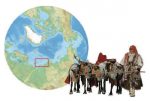
Карские Ворота
Карское море (максимальная глубина 600 м) на востоке ограничено архипелагом Северная Земля, на западе – островами Вайгач и Новая Земля. Побережье материка выступает далеко на север полуостровами: Таймыр, Ямал, Гыданский. Проливы Югорский Шар, Карские Ворота и Маточкин Шар соединяют его с Баренцевым морем, проливы Шокальского и Вилькицкого – с морем Лаптевых. Острова сосредоточены главным образом […]
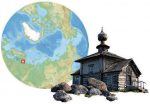
Соловецкие острова – жемчужина Беломорья
Ученые предполагают, что Белое море возникло на месте ледникового озера в результате последнего оледенения, т. е. не более 12 тыс. лет назад. Белое море (максимальная глубина 350 м) омывает север Русской равнины. Акватория моря глубоко вдается в сушу к юго-востоку от Кольского полуострова, соединяясь на севере с Баренцевым морем широким мелководным проливом. Берега моря разнообразны […]
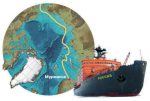
Северная морская граница России
Вы уже знаете, что морские границы России по протяженности почти в 2 раза превосходят сухопутные. Познакомимся с ними поближе. Что такое северная морская граница нашей страны, трудно представить во всей полноте, ведь сантиметры карты на местности оборачиваются тысячами километров ледяных пустынь, торосов, неприступных скал. И даже там, где побережье относительно доступно, суровые климатические условия – […]

Часовые пояса России
Отсчет часовых поясов на Земле ведется от начального (Гринвичского) меридиана с запада на восток в соответствии с вращением планеты. Выделяют 24 пояса, при этом каждый последующий отличается от предыдущего на 1 час. Границы поясов, прежде всего на суше, часто не совпадают с меридианами, так как проведены с учетом границ стран, а внутри страны – с […]

На севере Евразии
Россия расположена на севере Евразии. По площади наша страна крупнейшая в мире – 17,1 млн км². Сравните: площадь всей Южной Америки, включая острова, – 18,3 млн км², Канады – около 10, Китая – 9,6, США – 9,4 млн км². Почти 1/3 территории страны расположена в Европе, 2/3 – в Азии. Северное побережье омывают воды Северного […]
Контрольные вопросы про Аргентину
Объясните, почему Аргентина была «задворками» Испанской Америки? Перечислите основные полезные ископаемые и покажите на карте места их залегания. Перечислите основные этнические группы, участвовавшие в формировании аргентинской нации, и укажите причины, способствовавшие быстрому росту населения. Назовите самые развитые отрасли экономики и дайте их краткую характеристику. Укажите основные товары экспорта сельскохозяйственной продукции. Дайте краткую характеристику развития транспорта. […]
Туризм и достопримечательности Аргентины
Аргентина относится к числу наиболее посещаемых стран Латинской Америки. В 2016 г. ее посетили 5,6 млн чел. (4-е место в регионе). Доход от туризма составил 6 млрд долл. Для развития туристического бизнеса в стране есть практически все — многокилометровые пляжи и одни из самых высоких горных вершин мира, бескрайние степи и изумительные по красоте водопады, […]
Транспорт Аргентины
Аргентина обладает достаточно густой транспортной сетью и имеет значительный объем грузовых и пассажирских перевозок. Однако структура транспортной сети отражает длительную зависимость от внешнего рынка. Основное назначение дорог состояло в том, чтобы обеспечить вывоз сельскохозяйственной продукции, и поэтому транспортные линии были направлены из внутренних сельскохозяйственных районов к морским портам. В результате сложилась радиальная конфигурация транспортной сети […]
Рыболовство Аргентины
Несмотря на большую протяженность береговой линии, рыба и морепродукты никогда не играли существенной роли в рационе аргентинцев. Суммарный улов не превышает 1 млн т; основные промысловые породы рыб — серебристый хек, путассу, клыкач, морские караси. Структура вылова рыбы и морепродуктов следующая: рыба — 78 %, моллюски — 20 %, крабовые — 2 %. Главным экспортным […]
Сельское хозяйство Аргентины
Среди стран Латинской Америки Аргентина выделяется относительно высоким уровнем развития сельского хозяйства и небольшим удельным весом в объеме ВВП (6 %), довольно разнообразной структурой сельскохозяйственного производства. Страна полностью удовлетворяет свои потребности в продовольствии, за исключением некоторых продуктов, и является одним из ведущих экспортеров на мировом рынке. Объемы производимого продовольствия достаточны для того, чтобы прокормить 300 млн […]
Общая характеристика хозяйства Аргентины
Аргентина — одна из наиболее развитых стран Латинской Америки. Она занимает одно из ведущих мест в регионе как по суммарному объему ВВП (256,7 млрд долл.), так и в расчете на душу населения (6,5 тыс. долл., 2017 г.), а также по производству ряда важнейших видов промышленной продукции. На долю промышленности приходится 30 % ВВП, сельского хозяйства — […]
Население Артегнтины
До начала XVI в. территорию Аргентины населяли индейские племена: пампа, пуэльче, тэуэльче, атакама, чонеки, входившие в обширную империю инков. Индейцы жили оседло и занимались охотой, рыболовством и земледелием. Приход испанцев и последующая колонизация привели к массовому истреблению коренного населения. Особенно трагическая судьба выпала на долю индейских племен, проживавших в Патагонии. В течение XVIII в. они были […]
Полезные ископаемые Аргентины
Аргентина располагает достаточно разнообразной минерально-сырьевой базой для развития промышленности. В мире она выделяется запасами стратегического сырья: урановых руд, бериллия и вольфрама. По запасам урана (7,6 тыс. т) Аргентина входит в первую десятку стран мира. На севере страны, в Лаплатской низменности, в Патагонии, а также в прогибах Прекольдильер и Анд, на острове Огненная Земля открыты месторождения […]
Природные условия Аргентины
Природа Аргентины вследствие большой протяженности с севера на юг и различий в рельефе существенно разнится. Северная и восточная часть — это равнина, западная и южная — возвышенности и горы. Вдоль всей западной границы страны простираются горные хребты Анд. На северо-западе лежит высокогорное замкнутое вулканическое плато Пуна с абсолютными отметками до 6500 м. Наибольшей высоты Анды […]

Географическое, административное и геополитическое положение Аргентины
Аргентинская Республика (Аргентина) — одна из наиболее крупных и экономически развитых стран Латинской Америки. По размерам территории занимает второе место после Бразилии, а по численности населения — третье, уступая Бразилии и Мексике. Соседями Аргентины являются: на севере — Боливия, Парагвай, Бразилия и Уругвай, на юге и западе — Чили, на востоке омывается водами Атлантического океана. […]
Животный мир Бразильского нагорья
Животный мир Бразильского нагорья разнообразен, так как в его пределах сочетаются различные типы ландшафтов. Леса, даже вблизи от населенных пунктов населены многочисленными обезьянами, приносящими большой вред садам и посевам, в саваннах живут броненосцы, муравьеды, страусы-нанду. Распространены хищники — пумы и ягуары. Повсюду изобилуют птицы, особенно попугаи и колибри, очень много змей и других пресмыкающихся. Количество […]
Контрольные вопросы о Мексике
1. Назовите основные этапы становления государства Мексика. 2. Перечислите полезные ископаемые, имеющие мировое значение и покажите на карте места их залегания. 3. Перечислите основные расово-этнические группы, участвовавшие в формировании мексиканской нации. 4. Что такое «макиладорас» и какова его роль в экономике страны? 5. Каковы выгоды Мексики от участия в Североамериканской зоне «свободной торговли»? 6. Оцените […]
Туризм и основные достопримечательности Мексики
Великолепная природа, прекрасные пляжи и снежные вулканы, богатейшая история с археологическими памятниками ацтеков, майя, колониальными дворцами, множество райских уголков, теплота ласковых волн и радушие жителей — все это привлекает туристов в Мексику. Поэтому не случайно но объемам валютных поступлений туризм занимает второе место после торговли нефтью и газом. В 2016 г. доход от туриндустрии составил […]
Транспорт Мексики
Наибольшее развитие получил сухопутный транспорт. Основные транспортные артерии имеют меридиональное направление и связывают внутренние районы страны с пограничными городами США. Однако преобладающий горный рельеф создает определенные проблемы для преодоления существующей транспортной разобщенности некоторых отдаленных и малонаселенных территорий. Железнодорожный транспорт. Годом рождения мексиканских железных дорог считается 1837 г., когда была выдана концессия на строительство железной дороги […]
Рыболовство Мексики
В омывающих Мексику морях и океанах насчитывается около 100 разновидностей рыб и моллюсков, из которых наибольшее промысловое значение имеют сардины, тунец, креветки, устрицы. Коммерческая ловля рыбы хорошо развита вдоль берегов Калифорнийского и Мексиканского заливов. Ежегодно вылавливается более 1,7 млн т рыбы и морепродуктов. Большая часть улова потребляется на месте и в небольших количествах перерабатывается или […]
Сельское хозяйство Мексики
Важная отрасль экономики Мексики. В аграрном секторе занято 13,4 % экономически активного населения, и на него приходится 3,6 % стоимости ВВП. Вместе с тем отрасль характеризуется низкой производительностью труда и рентабельностью производства, невысокой, по сравнению с развитыми странами, урожайностью культур и экстенсивными методами хозяйствования. Аграрная реформа продвигается очень медленно из-за опасений, что усилиями иностранцев торговля […]
Промышленность Мексики
В доколониальной Мексике широко были распространены различные ремесла, добывались золото, серебро, медь. С приходом европейцев развитие кустарной промышленности индейцев прервалось. В колониальный период экономика ориентировалась главным образом на добычу драгоценных металлов. Готовые изделия завозились из метрополии (Испании), хотя формально не существовало закона, который бы запрещал организацию в колонии производств. После завоевания политической независимости в мексиканском […]
Общая характеристика хозяйства Мексики
По уровню социально-экономического развития Мексика наряду с Бразилией и Аргентиной входит в число наиболее развитых стран Латинской Америки. В 2017 г. ВВП страны по номиналу составил 1149 млрд долл. (второе место после Бразилии), в расчете на душу населения — 8,55 тыс. долл. (24-е место). Точкой отсчета экономического роста принято считать 1960—70-е гг. В этот период […]
Население Мексики
Формирование мексиканской нации произошло путем смешения индейского населения с испанскими конкистадорами и иммигрантами из других европейских стран последующих эпох. Результатом явилось медленное и по сей день не окончательно закончившееся образование новой расовой группы — метисы. В отличие от большинства латиноамериканских государств, в Мексике 63 % населения составляют метисы, 30 — индейцы, 5 — потомки европейцев […]
Полезные ископаемые Мексики
Минерально-сырьевые ресурсы разнообразны. Мексика занимает первое место в мире по запасам графита и флюорита, третье — сурьмы и серебра, четвертое — серы и ртути. Достаточно велики запасы нефти, газа, свинцово-цинковых, медных, марганцевых, железных руд, урана, золота. Руды цветных металлов Наибольшее значение имеют месторождения медных руд. Запасы меди значительны — 46 млн т при среднем содержании […]
Природные условия Мексики
Большую часть территории страны занимает Мексиканское нагорье с внутренним плоскогорьем, которое состоит из двух частей — Северной и Центральной Месы (меса по-испански «стол»). Северная Меса — полупустынное плато высотой 600—1000 м над уровнем моря. Центральная Меса выше — до 2600 м. С юга, запада и востока нагорье обрамляет гряда действующих вулканов — Сьерра-Мадре. Это одна […]

Географическое, административное и геополитическое положение
Мексиканские Соединенные Штаты — одно из крупнейших государств Латинской Америки. По площади Мексика занимает третье место, уступая лишь Бразилии и Аргентине, а по численности — второе после Бразилии. Мексика — самая крупная испаноязычная страна мира. В то же время в ней на каждом uiaiy ощущается влияние индейского прошлого. Даже название страны происходит от имени верховного […]
Контрольные вопросы о Бразилии
Перечислите основные этапы становления государства Бразилия. Назовите полезные ископаемые, обеспечивающие развитие горнодобывающей промышленности и являющиеся одним из значимых источников валютных поступлений. Раскройте своеобразие природных условий бразильского государства и охарактеризуйте уникальность величайшей природной области планеты — Амазонии. Расскажите, как происходил процесс формирования бразильской нации; современные расовые этно-лингвистические группы и демографические показатели. Укажите основные направления экономического преобразования […]
Туризм и основные достопримечательности Бразилии
По рейтингу международной организации туризма Бразилия входит в тридцатку наиболее посещаемых государств мира. В 2016 г. страну посетило 6,6 млн туристов, доход от туризма составил 6 млрд долл. Основной поток направляется на юго-восток страны. Самые посещаемые города: Рио-де-Жанейро, Сан-Паулу, Флорианаполис, Фосс-де-Игуассу, Салвадор. Туриндустрия обеспечивает занятость более 5 млн чел., ее доля в ВВП — 7,5 […]
Транспорт Бразилии
Основу транспортной сети составляет автомобильный транспорт, на долю которого приходится чуть более 60% перевозимых грузов и 90 % пассажиров. Бразилия обладает самой протяженной автодорожной сетью в Латинской Америке — 1,7 млн км, из них менее 10 % — дороги с твердым покрытием. По территории страны дорожная сеть размещена крайне неравномерно. Большая густота автодорог в Юго-Восточном […]
Сельское хозяйство Бразилии
Сельское хозяйство является одной из значимых отраслей экономики страны. На его долю приходится 5,2 % BBII, а вместе с предприятиями, перерабатывающими продукцию аграрного сектора, — 30 %. В отрасли занято 15 % экономически активного населения. Страна в основном удовлетворяет потребности в собственном продовольствии. Бразилия — традиционный поставщик на мировой рынок ряда сельскохозяйственных продуктов: кофе, сахара, […]
Общая характеристика хозяйства Бразилии
Экономическое развитие Бразилии происходило неравномерно. До середины 1960-х гг. страна развивалась медленными темпами. В последующем началось постепенное развитие в рамках программы «Бразил-модель», главным элементом которой явилась опора на иностранный капитал. Переломным этапом в экономическом развитии страны оказались 1990-е гг. С целью преодоления экономического кризиса конца 1980-х — начала 1990-х гг. правительством страны были проведены финансово-экономические […]
Население Бразилии
Бразильская нация сформировалась в результате смешения аборигенов-индейцев, негров-рабов и европейских эмигрантов. Коренное население — индейцы (гуарани, аймара, карибу и др.) проживали повсеместно до середины XVI в. После колонизации Бразилии Португалией началось его истребление и ассимиляция. По последней переписи населения (2010) численность индейского населения составила 817 тыс. человек, да и те проживают в труднодоступных районах Амазонии. […]
Полезные ископаемые Бразилии
Обширность территории и особенности геологического строения предопределили наличие разнообразных полезных ископаемых. Бразилия занимает первое место в мире по подтвержденным запасам стронция, тантала, талька и пирофиллита, второе — бериллия, каолина, третье — вермикулита, железных руд. В настоящее время в стране добывается 70 видов полезных ископаемых, в том числе 45 — нерудного, 21 — рудного и 4 […]
Природные условия Бразилии
На территории Бразилии выделяются две огромные природные области: Амазония, в центре которой Амазонская низменность — самая крупная в мире, площадью более 5 млн км2, и горная, соответствующая пологим склонам Бразильского плоскогорья с отдельными островными горами. С севера к Амазонии подступают невысокие склоны Гвианского нагорья, с запада — горной системы Анд. На границе с Венесуэлой расположена […]
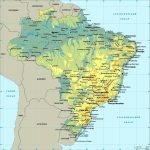
Географическое, административное и геополитическое положение Бразилии
Бразилия — самая крупная страна Латинской Америки как по территории, так и по численности населения. По размеру территории и но количеству жителей она занимает 5 место в мире. Граничит: на севере с Суринамом, Французской Гвианой, Венесуэлой и Колумбией, на юге — с Парагваем, Аргентиной и Уругваем, на западе — с Боливией и Перу, на востоке […]
Контрольные вопросы о Латинской Америке
1. Что скрывается под термином «Латинская Америка»? 2. Перечислите европейские государства, участвовавшие в колонизации Латинской Америки, и покажите на карте их бывшие колониальные владения. 3. Расскажи те о роли США в дестабилизации политической жизни латиноамериканского региона прошлые века и в настоящее время. 4. Охарактеризуйте своеобразие природных условий региона в целом и наиболее крупных частей: Южная […]
Туризм Латинской Америки
В силу большой природной и историко-культурной аттрактивности территория Латинской Америки обладает огромным туристическим и рекреационным потенциалом. Туристы сдут, прежде всего, за пляжным отдыхом. Не так много на нашей планете мест, где пляжный сезон длится круглый год, и не так много морей, которые по своей красоте и чистоте могут сравниться с Карибским морем. Кроме того, это […]
Транспорт Латинской Америки
Транспортная сеть Латинской Америки начала формироваться в конце XIX — начале XX в. Строительство дорог велось в основном американскими и английскими компаниями. Дороги соединяли центры добычи полезных ископаемых с портами, а в Мексике — с пограничными городами США. Транспортная сеть в крупнейших странах Латинской Америки в 2016 г., тыс. км Страна Автодорог Железных дорог Трубопроводов […]
Рыболовство Латинской Америки
Значение этой отрасли определяется, прежде всего, тем, что рыба и рыбопродукты — важнейший элемент питания человека. В Латинской Америке развито как морское (почти во всех странах), так и озерно-речное рыболовство (Бразилия, Аргентина). Несмотря на огромное видовое богатство морской фауны (только в водах Мексиканского залива и Карибского моря их количество превышает 800), объектами товарного промысла являются […]
Сельское хозяйство стран Латинской Америки
Сельское хозяйство играет важную роль в экономике Латинской Америки. Доля занятых в аграрном секторе составляет около 16 % экономически активного населения. Стоимость производимой сельскохозяйственной продукции достигает 300 млрд. долл. При этом около 40 °/о стоимости продукции приходится на зерновые, корне- и клубненосные культуры. Свыше 40 % произведенной продукции поставляется на экспорт. Так, в 2015 г. […]
Отрасли промышленности Латинской Америки
После экономического кризиса конца 1980-х — начала 1990-х гг. структура промышленности в регионе существенно изменилась. Наряду с горнодобывающей промышленностью, электроэнергетикой и сельским хозяйством активно развиваются наукоемкие производства, такие как авиастроение, электроника, электротехника и др. При этом в строительстве предприятий наблюдаются три тенденции: во-первых, развитие «верхних этажей» производства (с высокой добавленной стоимостью), во-вторых, ориентация выпуска продукции […]
Общая характеристика хозяйства Латинской Америки
В колониальные времена в странах региона были развиты две основные отрасли хозяйства: горнодобывающая промышленность (добыча благородных металлов) и сельское хозяйство (плантационное). Практически вся продукция этих отраслей монопольно вывозилась в Испанию и Португалию. В постколониальный период все этапы экономического развития были связаны с иностранным капиталом, сначала английским, потом американским. В наши дни велика роль китайского и […]
Население стран Латинской Америки
Археологические исследования, проведенные на территории Латинской Америки, показали, что она была заселена сравнительно недавно — порядка 20—30 тыс. лет назад выходцами из Северо-Восточной, Восточной и Юго-Восточной Азии. Предполагают, что миграция происходила несколькими путями и в несколько этапов. Ряд ученых считает, что основной путь миграции из Азии был через Берингию — участок суши, некогда соединявший Чукотку […]
Полезные ископаемые Латинской Америки
Латинская Америка обладает огромными запасами полезных ископаемых, среди которых мировое значение имеют ниобий, литий, бериллий, молибден, медь, сера, сурьма, серебро, железные и марганцевые руды, бокситы и углеводородное сырье, драгоценные камни. Однако по территории региона они распространены неравномерно, что связано с особенностями геологического строения. Топливно-энергетические ресурсы залегают в краевых и межгорных прогибах Анд, заполненных осадочными отложениями. […]
Природные условия Латинской Америки
Природные условия Латинской Америки очень разнообразны, и это разнообразие в первую очередь обусловлено ее положением в нескольких природно-климатических зонах. Большая часть региона размещена в экваториальных и тропических широтах. Лишь небольшая часть Южной Америки лежит в умеренном поясе. В строении поверхности существенную роль играют горные системы Тихоокеанского складчатого пояса, протянувшиеся вдоль западных окраин Северной и Южной […]
Регионы Латинской Америки
Огромные масштабы «латиноамериканского» мира, его географические и социально-экономические различия дали Экономической комиссии ООН основание разделить Латинскую Америку на 3 региона: Карибский регион (или Вест-Индия), Центральная Америка и Южная Америка. Границы между ними достаточно четкие, географически оконтурены. Карибский регион Самый маленький по площади (234,3 тыс. км2), но с самым большим количеством государств, государственных и иных образований, […]
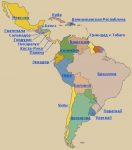
Политическая карта Латинской Америки
Латинской Америкой называют регион Западного полушария, расположенный между США на севере и Антарктидой на юге. В него входят Мексика, страны Центральной Америки, Вест-Индии (Карибского моря) и Южной Америки. Мексику, Центральную Америку и Вест-Индию нередко объединяют в субрегион, называемый Мезоамерика. В документах ООН Вест-Индия еще именуется «Карибский регион». В настоящее время на территории региона расположено 33 […]
Контрольные вопросы о Канаде
1. Дайте краткий исторический экскурс образования государства Канада. 2. Покажите на карте крупнейшие географические области и дайте краткую характеристику природы. 3. Покажите на карте важнейшие месторождения цветных и благородных металлов, неметаллического сырья и энергоносителей. 4. Охарактеризуйте этнолингвистический состав населения; перечислите основные группы населения, господствующие религии, приведите демографические показатели, сложившиеся во втором десятилетии XXI в., назовите […]
Туризм и достопримечательности Канады
Огромные размеры страны, и как следствие, разнообразнейшие и не тронутые цивилизацией природные условия и ландшафты, почти не использованный рекреационный потенциал создают хорошие предпосылки для развития прежде всего экологического и познавательного туризма. В туристическом бизнесе занято около 160 тыс. чел. Эта отрасль дает 2 % ВВП страны. В 2016 г. страну посетило 20 млн чел., доход […]
Транспорт Канады
Большая размерность территории Канады способствовала развитию всех видов транспорта, однако транспортные коммуникации размещены крайне неравномерно. Существующая дорожная сеть имеет преимущественно широтное направление и вытянута вдоль границы с США, при максимальной густоте на юго-востоке страны. На огромных просторах севера дорог практически нет. По грузообороту первое место занимает железнодорожный транспорт, а по пассажирообороту — автомобильный. Протяженность железных […]
Рыболовство Канады
Промысловое рыбное хозяйство одно из самых прибыльных. При вылове до 1 млн т рыбы в год Канада производит товарной продукции на сумму свыше 3 млрд канадских долларов. При этом она вывозит за рубеж 85 % рыбы и морепродуктов, занимая 5-е место в мире по экспорту рыбопродукции. На экспорт поставляется широкий ассортимент рыбных консервов, мороженый и […]
Сельское хозяйство Канады
Сельское хозяйство отличается высоким уровнем механизации, концентрации производства, товарности и специализации, высокой производительностью труда. Это позволило полностью обеспечить внутренние потребности жителей страны в основных видах продовольствия и почти половину продукции отрасли поставлять на экспорт. Основу сельского хозяйства составляют крупные фермы (270 га по площади). Большинство фермеров — собственники земли или арендаторы. В сельском хозяйстве занято […]
Промышленность Канады
Ведущими отраслями промышленности являются: энергетика, горнодобывающая, нефтяная и газовая, черная и цветная металлургия, машиностроение, химическая. Не утратили своего значения и традиционные отрасли — пищевая и текстильная. Первое место в промышленном производстве занимает обрабатывающая промышленность. Среди ее отраслей, кроме машиностроения, велика роль лесной, деревообрабатывающей и целлюлозно-бумажной. Возрастает значение наукоемких отраслей (электроника, электротехника, фармацевтика и др.). По территории […]
Общая характеристика хозяйства Канады
Современная Канада — одно из наиболее развитых государств мира. По суммарному объему ВВП по номиналу занимает 10-е место в мире, в расчете на душу населения — 16-е место в мире, средний размер заработной платы — 19-е место в мире, ИЧР — очень высокий (10-е место), ИГН — невысокий (18-е место), международный индекс счастья высокий (7-е […]
Население Канады
Канада — страна «переселенческого капитализма». Коренные жители — индейцы и инуиты — заселили эту территорию более 30 тыс. лет назад, перебравшись из Азии через Берингов пролив. Проникновение европейцев началось позднее — в X в., когда возникли норвежские поселения на полуострове Ньюфаундленд. Но лишь с XVI в. европейские миграции стали постоянными и устойчивыми. Ныне Канада — страна […]
Полезные ископаемые Канады
Канада богата практически всеми видами полезных ископаемых. В ее недрах находятся крупные месторождения руд черных и цветных металлов, топливно-энергетических и горно-химических ресурсов, строительных материалов, многие из которых относятся к числу важнейших и остродефицитных, в том числе медь, никель, кобальт, золото, калийные соли, асбест, нефть, газ и др. Достоверные ресурсы важнейших видов минерального сырья на 2017 […]
Природные условия Канады
Территория Канады отличается большим разнообразием природных условий. Более половины территории страны занято обширными равнинами и платообразными возвышенностями. Они протянулись от полуострова Лабрадор на востоке до Кордильер на западе. Весь северо-восток занимает Лаврентийская возвышенность. По характеру поверхности она напоминает территорию Карелии и Финляндии. Невысокие (150—600 м), поросшие соснами и елями холмы чередуются с узкими и длинными […]
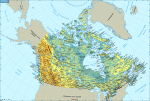
Географическое положение и административное устройство Канады
Канада, государство, расположенное в северной части материка Северная Америка. Омывается водами трех океанов — Северного Ледовитого, Атлантического и Тихого. По площади —это вторая страна мира после России, а по длине береговой линии опережает все другие государства. Простирается более чем на 7000 км с запада на восток. Чтобы пересечь страну на автомобиле, потребуется 7 дней; то […]
Контрольные вопросы о США
1. Охарактеризуйте географическое положение и административное устройство США. 2. Назовите полезные ископаемые, по запасам которых США занимают одно из первых мест в мире; в каких полезных ископаемых страна испытывает недостаток? 3. Покажите на карте центры добычи углеводородного сырья, железных руд, золота, свинца, цинка, меди. 4. Охарактеризуйте этнолингвистический состав населения; перечислите основные группы населения, господствующие религии, […]
Туризм и основные достопримечательности США
Туристический бизнес — одно из важнейших направлений сферы услуг. Доход от его деятельности в 2017 г. составил 210,7 млрд долл. (первое место в мире). По количеству принимающих иностранных туристов (75,9 млн чел.) США занимает третье место в мире после Франции и Испании. Из-за высокого уровня развития экономики и уровня доходов населения в стране создана крупнейшая […]
География транспорта США
США располагают хорошо развитой и разветвленной транспортной сетью на всей территории страны, за исключением Аляски. По большинству показателей развития транспорта США занимают первое место в мире. Сеть транспортных коммуникаций составляет 1/3 мировой транспортной сети. На Соединённые Штаты приходится около 40 % мощности всех тягловых установок и почти 30 % грузоподъемности подвижных транспортных средств мира. В стране […]
Рыболовство США
Основные рыбопромысловые районы США располагаются в океанских прибрежных зонах. Вдоль атлантического побережья от штата Мэн до Чесапикского залива на дальних отмелях ловят камбалу, пикшу, треску и другие виды рыб, в прибрежной зоне — сельдь и макрель. Этот регион славится также омарами, устрицами, мидиями, гребешками, крабами. Промысловые районы Юга на атлантическом побережье южнее мыса Хаттерас и […]
Сельское хозяйство США
Агропромышленный комплекс играет важную роль в экономике США. Он включает отрасли, создающие средства производства для сельского хозяйства, само сельскохозяйственное производство, отрасли, обеспечивающие переработку и сбыт сельскохозяйственного сырья и произведенную из этого сырья продукцию, а также те отрасли производственной и социальной инфраструктуры, которые непосредственно воздействуют на создание сельскохозяйственной продукции. В аграрном секторе занято около 20 млн […]
Промышленность США
На долю промышленности приходится 20,9 % ВВП, 23,6 % занятого населения и 2/3 экспорта страны. Американская промышленность отличается высоким техническим уровнем, вобравшим в себя все стадии конвейерной технологии, автоматизации и компьютеризации. Одна из сильных сторон — высокая производительность труда. Однако в последние два десятилетия США потеряли лидерство во многих отраслях экономики, в производительности труда, что […]
Общая характеристика хозяйства США (кратко)
США — высокоразвитое государство мира и ведущая экономическая держава, занимающее первое место по номинальному ВВП и второе — по ППС. В 2017 г. размер ВВП по номиналу составил $19,4 трлн (25,7 % мирового ВВП). С 2001 г. ВВП вырос в 1,8 раза (на $9 трлн), но его доля в мировом ВВП снизилась на 6,1 %. […]
Население страны США
США — одна из наиболее населенных стран мира. По численности населения занимает третье место в мире, уступая лишь Китаю и Индии. Огромную роль в формировании американской нации — американцев — сыграла иммиграция. До конца XIX в. в потоке переселенцев преобладали выходцы из стран Западной Европы, в начале XX в. — Восточной Европы, а с середины […]
Полезные ископаемые США
Недра США отличаются разнообразием и богатством полезных ископаемых. Особенно велики запасы топливно-энергетических ресурсов, железных руд, некоторых видов руд цветных металлов, горно-химического сырья и индустриальных минералов. Страна занимает первое место в мире по подтвержденным запасам угля, брома, соды, диатомитов и вермикулита, второе — молибдена, меди, бериллия, кадмия, талька, третье — титана, золота, серебра, гафния, тория, йода […]
Природные условия США
Природные условия США очень разнообразны и по их разнообразию Соединённые Штаты сопоставимы лишь с Россией. Более половины территории страны — это низменности и равнины, образующие три природных района: Центральные равнины, Великие равнины, Примексиканская низменность. Центральные равнины занимают площадь около 3 млн км2 и тянутся через всю центральную часть США с севера на юг до среднего […]
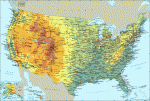
Географическое положение и административное устройство США
Соединённые штаты Америки, общепринятая краткая форма — Соединённые Штаты, сокращение — США, государство, расположенное в Северной Америке. Состоит из трех частей: 1) собственно США, 2) Аляска и 3) Гавайские острова. Кроме того, США принадлежит ряд владений: Пуэрто-Рико и Виргинские острова в Карибском море, Гуам, Восточное Самоа и Микронезия, в состав которой входят Каролинские, Марианские и […]